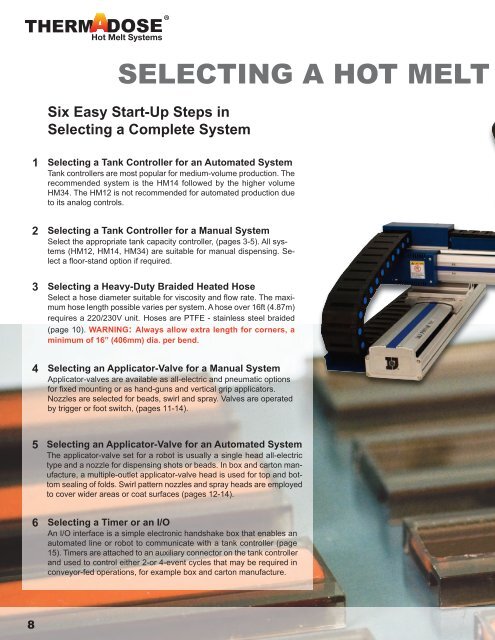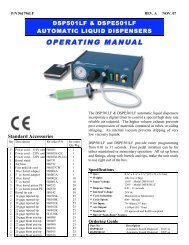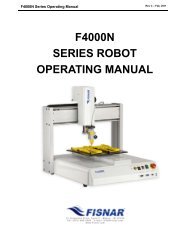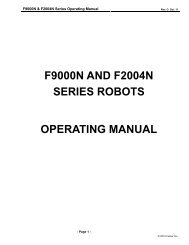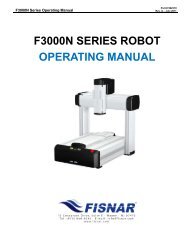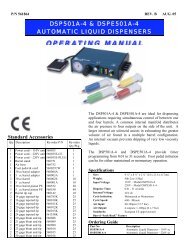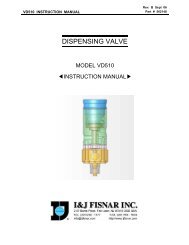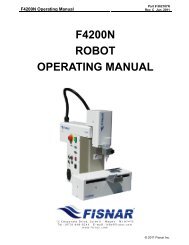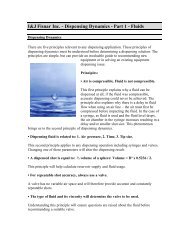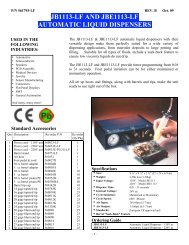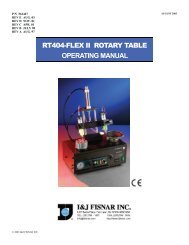Hot Melt Systems - Interempresas
Hot Melt Systems - Interempresas
Hot Melt Systems - Interempresas
You also want an ePaper? Increase the reach of your titles
YUMPU automatically turns print PDFs into web optimized ePapers that Google loves.
SELECTING A HOT MELT<br />
Six Easy Start-Up Steps in<br />
Selecting a Complete System<br />
1 Selecting a Tank Controller for an Automated System<br />
Tank controllers are most popular for medium-volume production. The<br />
recommended system is the HM14 followed by the higher volume<br />
HM34. The HM12 is not recommended for automated production due<br />
to its analog controls.<br />
2 Selecting a Tank Controller for a Manual System<br />
Select the appropriate tank capacity controller, (pages 3-5). All systems<br />
(HM12, HM14, HM34) are suitable for manual dispensing. Select<br />
a floor-stand option if required.<br />
3 Selecting a Heavy-Duty Braided Heated Hose<br />
Select a hose diameter suitable for viscosity and flow rate. The maximum<br />
hose length possible varies per system. A hose over 16ft (4.87m)<br />
requires a 220/230V unit. Hoses are PTFE - stainless steel braided<br />
(page 10). WARNING: Always allow extra length for corners, a<br />
minimum of 16” (406mm) dia. per bend.<br />
4 Selecting an Applicator-Valve for a Manual System<br />
Applicator-valves are available as all-electric and pneumatic options<br />
for fixed mounting or as hand-guns and vertical grip applicators.<br />
Nozzles are selected for beads, swirl and spray. Valves are operated<br />
by trigger or foot switch, (pages 11-14).<br />
5 Selecting an Applicator-Valve for an Automated System<br />
The applicator-valve set for a robot is usually a single head all-electric<br />
type and a nozzle for dispensing shots or beads. In box and carton manufacture,<br />
a multiple-outlet applicator-valve head is used for top and bottom<br />
sealing of folds. Swirl pattern nozzles and spray heads are employed<br />
to cover wider areas or coat surfaces (pages 12-14).<br />
6 Selecting a Timer or an I/O<br />
An I/O interface is a simple electronic handshake box that enables an<br />
automated line or robot to communicate with a tank controller (page<br />
15). Timers are attached to an auxiliary connector on the tank controller<br />
and used to control either 2-or 4-event cycles that may be required in<br />
conveyor-fed operations, for example box and carton manufacture.<br />
8


